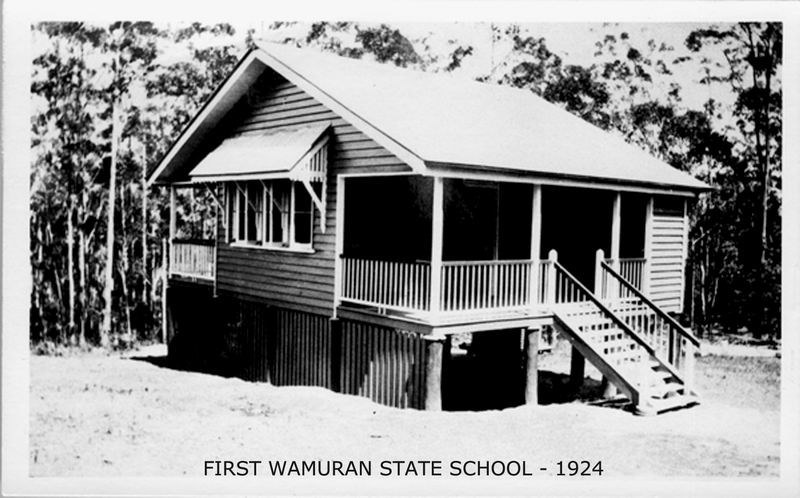Dairy Farming

From the first settlements in the district in the late 1800s most farmers had a “house cow” or two to provide fresh milk and have homemade butter, cheese and milk for their family before the days of electricity and the store in the district. They were self sufficient!
*The earliest settlers (late 1800s and early 1900s) e.g. Jensen, Sami, Fritz were largely self sufficient subsistence farmers who bartered any excess produce with neighbours and sold some where they could as there was poor transport and no refrigeration.
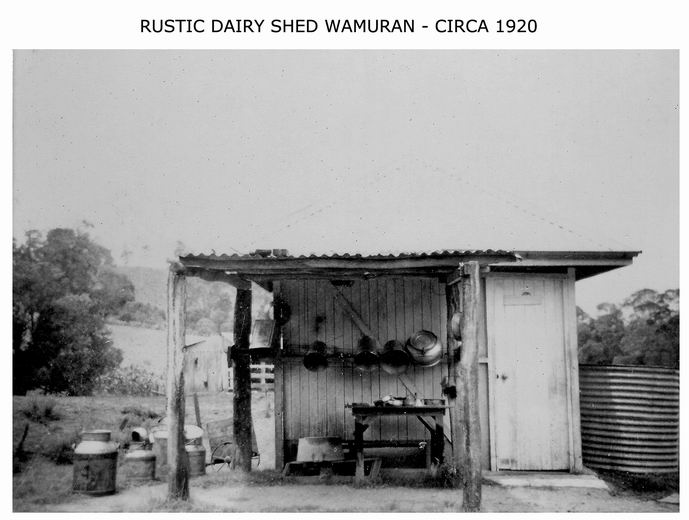

*Then with more transport, we became a big area of dairy farmers who largely made a living but it was hard work.
*Then they were affected by the Depression,
*The Australian Paper Mill at Petrie and developers offered money for their properties in the early 1960s,
*In the early 1970s was the change to bulk milk
* The United Kingdom joined the European Economic Community in Jan 1973. The U.K. had been our biggest market for Dairy products and now these markets were lost to us.
*And then in 2000 was deregulation.
These all affected the industry and each caused loss of farmers and eventually the loss of the local industry in 2005
The Banana Industry
Harry Franks, an early settler, is quoted as saying that Charlie Hall introduced the first “corms” to his farm in Wamuran Basin in 1910. The bananas flourished and Charlie Hall sold his bananas in Caboolture ripe for 3 to 4 pence (less than 5 cents in decimal currency) per dozen. Other growers got plants off Charlie Hall and the industry flourished by about 1918. The Wamuran Basin had bananas on most hills and was a large banana growing area, employing quite a lot of men, mainly for chipping the weeds. Ordinary garden hoes were used. Some of the men who worked there had come out from England as migrants. Among them were Syd Bass and Arthur Wetherell who settled on Mt Mee. Later on in the late 1930’s, a lot of the banana growers and some of the dairymen left to take up land at Eungella, Mackay. Legend says that they had crops ruined from a severe hailstorm and as we know times were hard in the Depression years. Well known names in the Basin as early growers were Hall, Williams, Whiting, Jackson, Clews, Sellin, Lewis, Tritruff, Chapple, Ross and England.
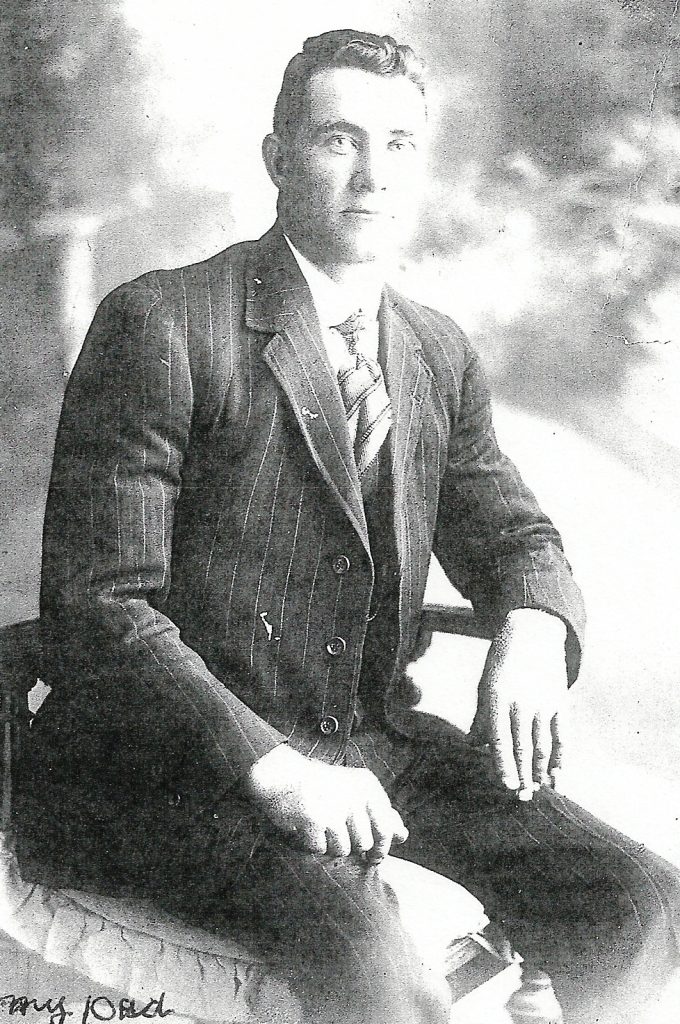
OPINION PIECE BY ROSS LINDSAY
The Wamuran area has gone from being a huge growing area for the banana industry to being a mere pimple because of the Great South East Development.
During the 90.s the supermarkets took control of the industry. They are supplied by the large area production in North Queensland e.g. Tully, Innisfail etc. What is left of the local industry survives by being innovative. With the population growth in South East Queensland, it has given growers to direct sell a very fresh product.
In the 50’s and 60’s, 80% of produce was grown within 100 km of capital cities. Now, for many reasons, large farms away from population centres are the “norm”. Add to this the reluctance of people to do this kind of work


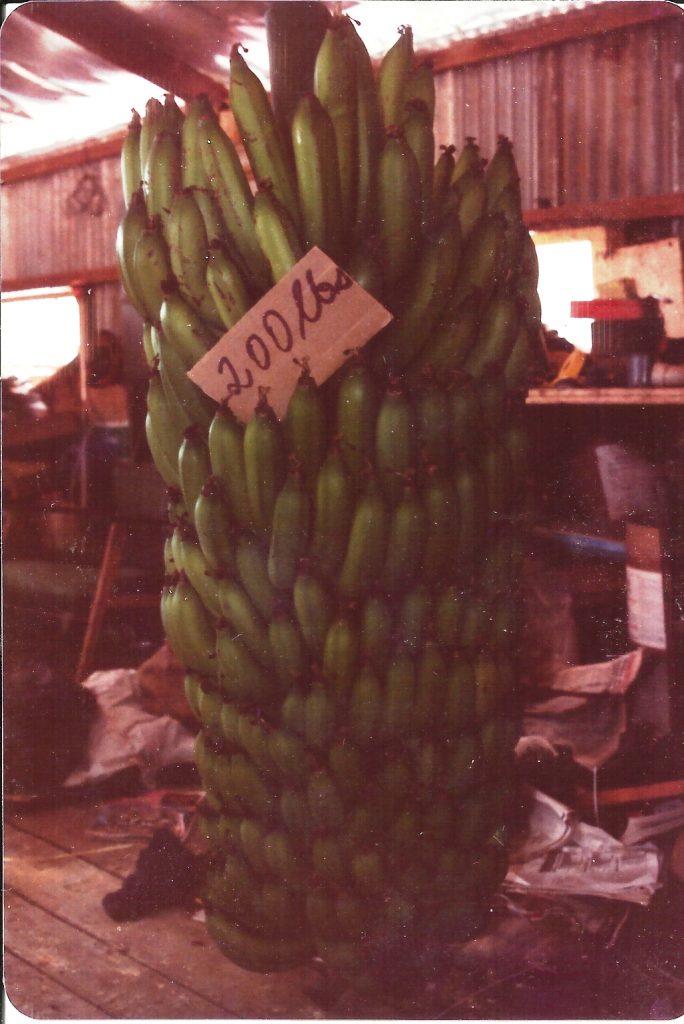
The Pineapple Industry
The first pineapple plants in Queensland were landed at Redcliffe settlement by the brig “Amity” in 1824.
Wamuran has been famous for its pineapple production for many years.
Pineapples were first grown in small volumes in Wamuran District as early as 1901, generally as an adjunct to, or a fill in crop, to supplement other more mainstream farming pursuits. The railway to Woodford opened in 1910 making it easier for farmers to send to markets. Early growers were Albert and George Salisbury on Newlands Road and Charles Wise. Salisbury brothers moved to Wamuran in 1911. Timber and bullock teams were their business. Later they grew pineapples and built homes on property owned by Wise and Grigg. Charles Wise owned the shop at Wamuran and had farms at Wamuran and towards Woodford. Charlie Wise was noted by a government expert in 1915- ‘His methods are thorough and he pays strict attention to manurial crops. His pineapples are equal to anything he had seen in the state”. The expert said in 1915 – “at Wamuran there is some excellent pineapple and citrus country”. (Trove)
By 1924, an article in “Trove” states that there were at least 12 pineapple growers in the Wamuran area. These would have included, Westacott, Wise, Salisbury, August Mollenhagen who arrived in 1916, William Felschow arrived in 1912 and in 1928 Ernie Goeldner, his brother – in- law, Nicholsons (1921), Jensens (1880S), Zanows, Behrens, George Jennings, Meurant family (1921), Lockhart (1920), Bye family and possibly others.
The pineapple industry of Wamuran continued to expand. New families like Russell Grigg (1929), the Embrey family (1928), Fred Gamgee (bought land off Dellits 1931), the Crowther family (1927), the Nicholson family (1921), Franks family (Franks Lane), Scurrs, Francis brothers, Schrodters, Sharrocks, Kirkwoods, Beasleys, Koppen (1939) and Waldron began growing pineapples. Svensons came about this period and provided case timber from their mill situated on Woodford Road across the railway line (about opposite the vet today).
At the period of time, the 50s and 60s, new farmers like Scurrs, Stephenson, McClintock, De Zwart, Weirsma, Carseldine, O’Shea, Serra and others joined the Wamuran pineapple growing community.
The New Millennium
By the early 2000s, the Pineapple Industry seemed to be thriving with the Cannery acquiring the rights to the song, “You Are My Sunshine”, which soon became the theme song for the Golden Circle product range. In 2003, the Cannery Board decided to buy the rights to the “Original Juice Company” in Griffith, NSW for what is believed to have been a very significant sum of money. This was drought time and fruit production was at a low point so fruit had to be imported to meet “Juice Producers” commitments-significantly adding to the cost of production. This acquisition proved to be an unsound investment and the Cannery soon ran into financial difficulties. In 2007, it was forced to sell 35% of the organisation to the Prime Equity Company from Anchorage in USA. This was the first sale of shares to anyone other than the growers and was the beginning of the end of the Golden Years.
THE FUTURE
In 2017, the industry has changed dramatically. The Cannery is very selective with its quality of fruit and growers find that there is a high rejection rate and the Cannery now takes a lower percentage of production and returns are lower.
Many growers have come and gone over the years but the “Golden Years” seem to have ended. There are few growers left around Wamuran. Mollenhagens are one of the original families still growing pineapples but are near to retiring age (Retired 2020). James Francis from the early Francis family continues in the industry. Frank Sierra and Polsoni’s continue to produce pineapples. Pinata is the largest grower in Australia.
Many farms have been subdivided or put to other uses.
It seems that the days of small growers is finished and production needs to be scientific, large scale, diversified, have year round supply and be well managed with professional advice from accountants, scientists, plant breeders, soil management to save the structure and integrity of the soil, conservation tillage, living mulch and new technology in all its forms to survive in the 21st Century. Sadly for older farmers, everyone now must have poisons licences and tractor licences, so keeping workmen up to date with legal requirements, requires quite a lot of book work.
At this stage, the pineapple industry at Wamuran has faded.
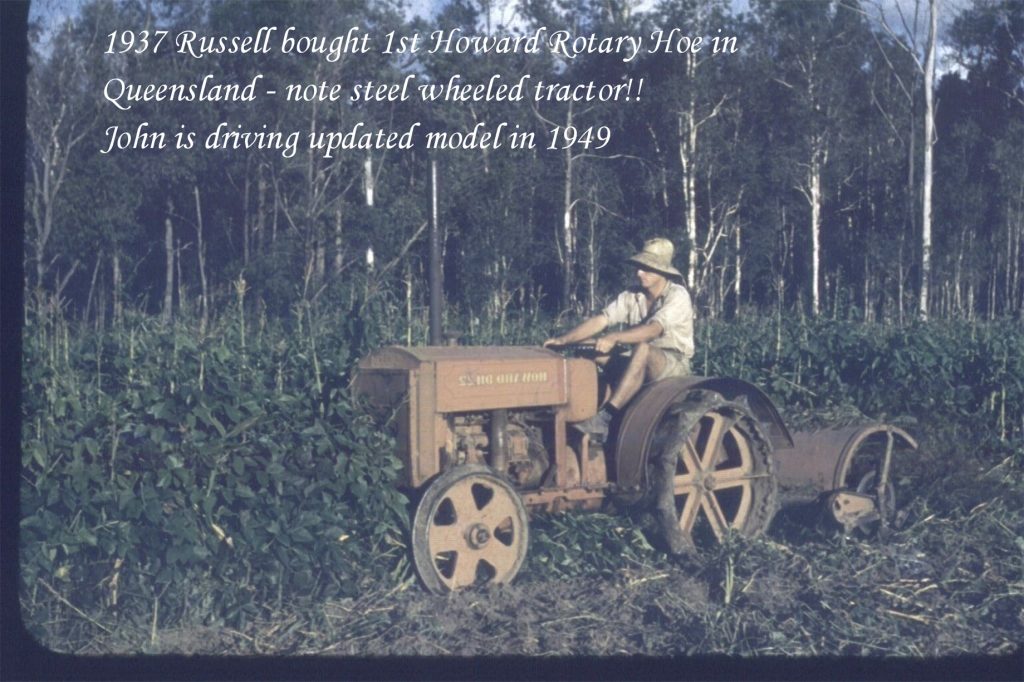
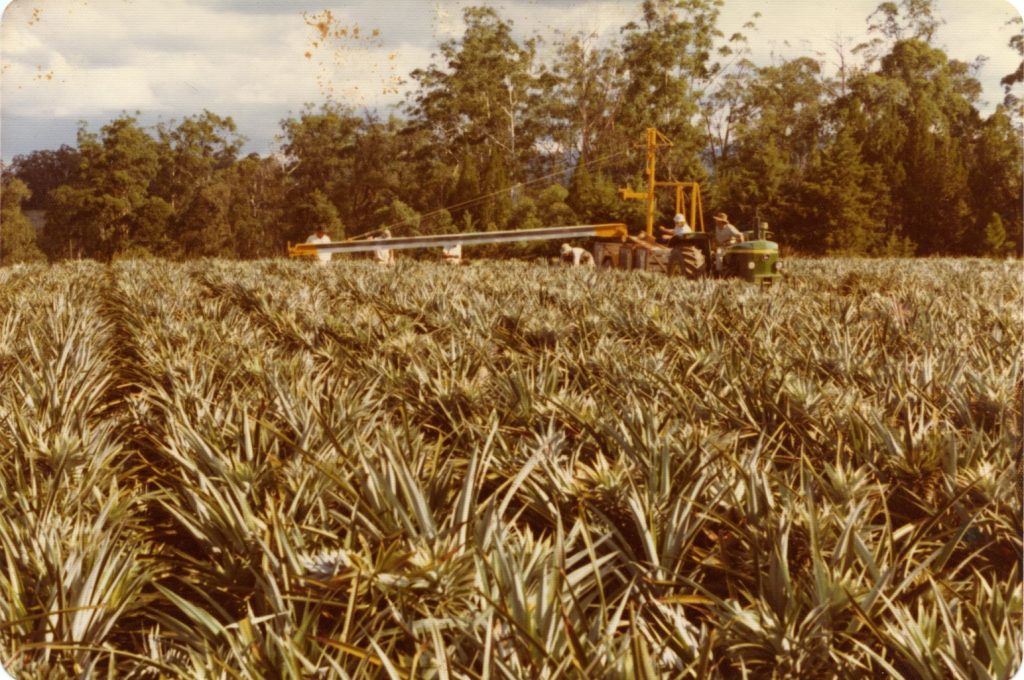
The Strawberry Industry
There were small crop growers of strawberries from the 1920s onwards and around Wamuran in the 1950s and 60s e.g. McGugan’s sold to Wolfenden’s in Central Avenue in 1947 and they and Reibelt family took over growing strawberries commercially, but the industry has grown exponentially from the 1970s. From 1975 -1982/83 Virginia Day grew commercial quantities of strawberries on land leased from Fredline on property which is now in Range View Estate and she lived in the original Felschow house on the property. Virginia Day was one of the early office bearers of Sunland Co-op. In 2018, there are 600 hectares’ of strawberries grown between Caboolture and Eumundi with approximately 150 growers. Farms range in size from having 5 000 plants to 5 million plants and the industry is worth 130 million dollars to the Queensland economy (“Strawberries Australia Facts and Figures” website). A large amount of this production is in the Wamuran area.
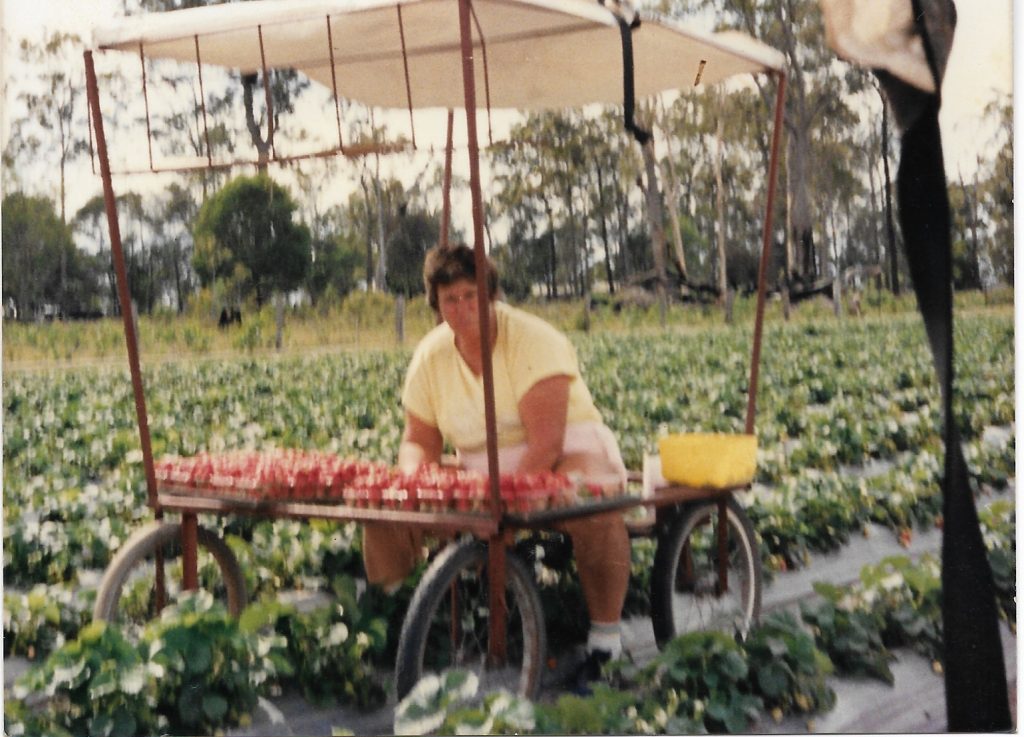
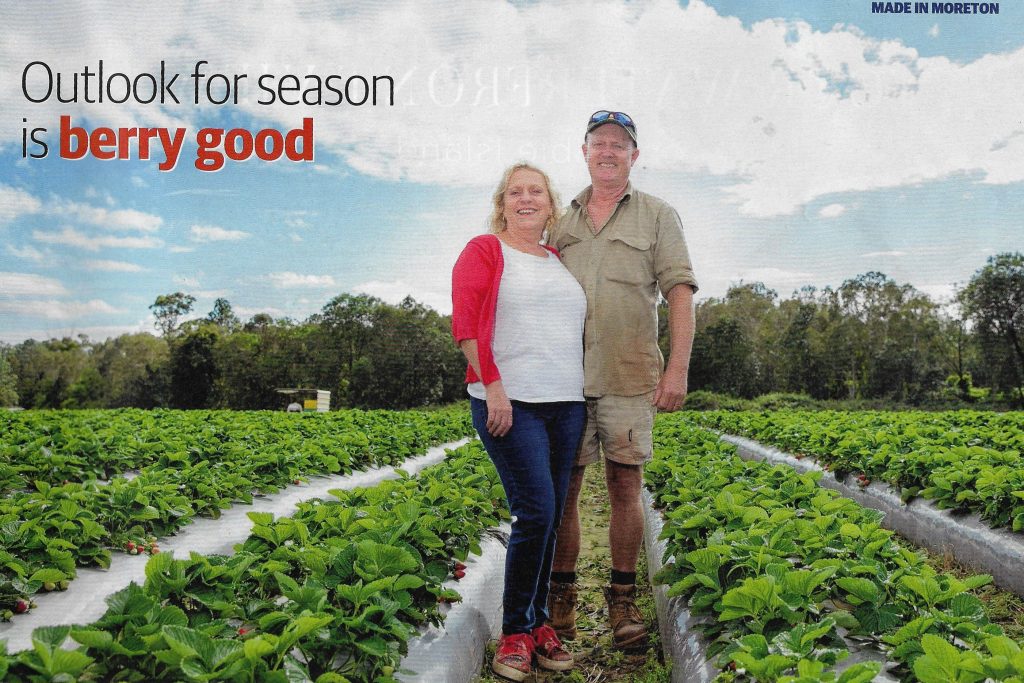
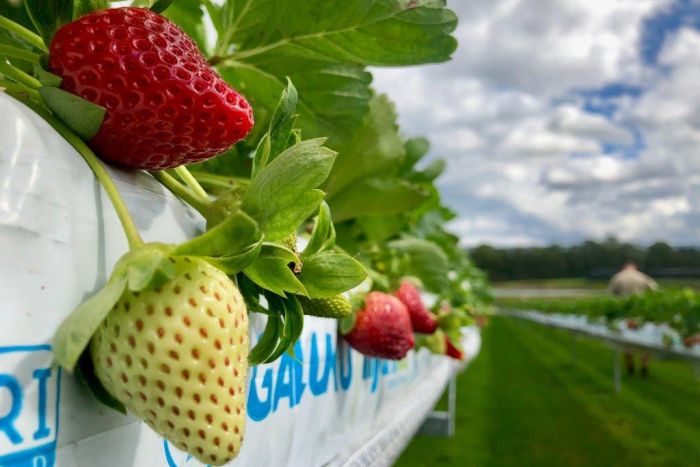

Sawmills of Wamuran
From the memories of Mrs Herman Behrens: – In the early times 1800-1900s, red cedar, beech and pine were valued highly but the hardwoods e.g. ironbark, bloodwoods etc. were often burnt as worthless. . Pine timber was marketable, but hardwood e.g. ironbark, bloodwood, was destroyed as valueless. Buyers gave 2/- per hundred super foot (.236 cubic metres) for pine, the owner assisting in falling, cutting, loading etc. Beech and red cedar bought a little more and were soon cut out. Prior to opening the railway, logs were often brought by bullock or horse team to Caboolture and taken to the rafting ground near Short Street now and the logs were floated to the mouth of the River and picked up by steamer and taken to Brisbane. To form the raft, the logs were spiked with iron dogs and tied together in lots of 5 and then the lots of 5 were tied together. The raft lay in shallow water till there was a high tide or the river ran fresh. The opening of the railway in 1909 created a slow revolution in the Wamuran Basin/Wamuran local way of life. The hauling of timber logs to Wamuran (much from Wamuran Basin) became so great that it gave employment to a full time loader in the timber trucks at the station. ”from the memoirs of Mrs Herman Behrens
“In the early days logs were exported by train from Wamuran station. Bullock teams and horse teams were used to haul logs to the station and to load them. The Salisbury brothers of Newlands Road were early bullockies circa 1915 and also early A.M. (Henry) Goebels, Jack Johnson, Irish Draper and Clews and horse teams were owned by Ray Whiting and after 1920 Harry Pates operated a horse team. There were 5 or 6 teams about in those days at least.from the memoirs of Bill Franks



Sawmills
Woodrow’s Mill- The Published work by John Kerr 1998 on “The Inventory of sawmills and tramways”, says Woodrow’s mill at Wamuran operated from 1918 -1940. The evidence I have gathered shows it operating from circa 1914 – 1927 and reopened 1935-1948. This mill operated on what was called the mill paddock on Newlands Road. It had a mill school called “Newlands Road School” associated with it for the mill workers and local residents. This school closed in 1927 as there were not enough students as the mill had closed but reopened 1936-1948
Wamuran – Brown and Broad (opposite the school) 1917— the Wamuran town area was surveyed and people started building so timber was needed.
W.J. Spillane operated at Davis Property ( opposite the service station and shops @2020) -1923-1924- .
An Extract from the “Brisbane Courier” Tuesday 23 November 1926, shows an article entitled “New Sawmill”-“ Messers J and W. Bell, sons of an old resident of the district, after an absence of several years, have returned to Wamuran, and have secured a block of land adjoining the railway yard, upon which they are erecting a sawmill.” From the “History of Tramways and Sawmills” by Kerr, this mill operated till 1933 and J Bell joined J. A. Mole in the enterprise. In the publication by Kerr in 1998 “The History of Tramways and Sawmills” J.H. Wilkinson is listed as operating in Wamuran from 1923-1941. On speaking to 90 year old, Jack Svenson of the early Wamuran Mill, who says he does not know of Wilkinson’s at Wamuran. I can find no evidence of their operating at Wamuran but Wilkinsons are in the newspapers for Elimbah and Morayfield. –
In the publication “The History of Tramways and Sawmills” above, it was noted that E.A. Shadforth operated at Bracalba 1917-1924 and Whitlock and Noon operated at Bracalba 1917/1918. The Council notes at the time described them as situated between the Big Hill and Paddy’s Pinch. Most mills of this area needed a water supply for their engines.
Svenson family-Moodlu– 1917– Johan Svenson built a case mill just past Schrodters place at Lords Lane –about 7 miles from Caboolture? It was across the railway line from Lords Lane and near Moodlu siding. The mill was built by Bill Behrens. Johan moved from there in 1939 and set up a mill cutting case and house timber on Frampton’s property operating all through the war years (later Mullers had a packing shed business there) at approximately 851 D’Aguilar Highway across the railway line that operated till 1948. In 1948, Johan Svenson moved the mill to where the school currently stands at 1066 D’Aguilar Highway, still cutting case and house timber. He had swapped land he owned, at what is now Wise Street for the land where the mill was sited. Johan’s sons, Frank, Johan (Jack), Ken and Alf worked at the mill. At the mill, Jack took over managing the mill in 1958 and improved the mill and worked it for 2 years. Then his father, Johan sold to Jack Grant.The mill at Wamuran was closed when the mill burnt down circa 1962. The government later resumed the land to build a school.

Post Office in foreground, church of England Pineapple Patch in the middle and the mill and mill houses in the background fronting D’Aguilar Highway in 1954.
Franks Mill Harry Franks built the Wamuran Sawmill on Norman Bye’s Property on Bye Road circa 1949; Norman Bye was to be manager. The sawmill was leased to various tenants before Bill took it over and ran it for 35-40 years- The mill was not doing well so late in 1951, it was moved to its present position on Bill Franks land at Woodford Road (D’Aguilar Highway) and opposite the Franks home. Bill later sold to Wamuran Sawmills which still operate in 2020.
